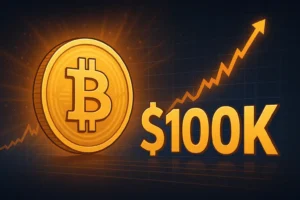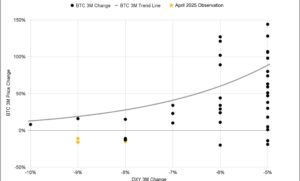Top 5 Staking Tokens To Consider in Investment Portfolio in 2022

COVID-19 has caused many fatalities globally and poses a new and unprecedented hazard to public health, food systems, and the workplace. Cryptocurrencies gained importance when the economy worsened and uncertainty increased.
Long-term crypto holders viewed staking as a way to earn rewards instead of merely keeping their coins in their wallets. Staking is an intriguing method to contribute to the security and efficiency of blockchain initiatives while simultaneously earning passive revenue. Consequently, the blockchain is more secure and can handle more transactions. Let’s check out five staking tokens worth investing in this year.
Terra (LUNA)
According to industry statistics, Terra (LUNA) reached a new high of $20.05 billion in total value locked (TVL) across its 13 product lines. Terra’s TVL was $11.9 billion on Dec. 1, up 68% in less than a month.
The platform’s users are staking significant amounts of money into the system. LUNA is presently trading at $90, a 12,000% rise from its January 2021 price of $0.7. LUNA has an annual staking payout of roughly 12.10 percent.
PancakeSwap (CAKE)
PancakeSwap is a popular staking tool that allows users to stake CAKE currencies. When investors stake CAKE coins, they may earn more CAKE or other currencies. Transaction costs on Binance Smart Chain are much cheaper than on Ethereum.
They may either claim or reinvest their PancakeSwap rewards. The CAKE coin has an annual return of 31–42 percent, making it one of the finest crypto staking currencies available.
Shiba Inu (SHIB)
Many investors regard SHIB as an asset to acquire and retain in their cryptocurrency portfolio. SHIB holders may now stake/bury, farm/dig, and farm/dig their tokens thanks to the ShibaSwap exchange’s debut.
While Shiba Inu operates on Ethereum (now PoW), the initial quantity of SHIB was coined upon launch; therefore, it cannot be mined. SHIB holders may stake (bury) their Shiba coins on the ShibaSwap exchange for BONE tokens and 0.03 percent of ETH swap transaction fees.
JEDSTAR (JED)
Even though JEDSTAR is a relatively young project, it has already made a name for itself in the crypto community, thanks to its innovative strategy to some of the issues that surround the industry. To mention a few, there are concepts like royalties for NFT authors, mining through a mobile app to enable lower-income people to earn money, and anti-‘pump-and-dump’ methods.
However, the showstopper is the $KRED, with Currency as a Service; This will be the first project independent cryptocurrency that will allow game developers a ‘plug-and-play’ solution to transform their game into an actual GameFi game, without worrying about managing their cryptocurrency themselves with even access to a universal currency.
JEDSTAR’s STARSTAKING platform, which can be accessed at https://jedstar.app, allows users to stake their utility token $JED in exchange for $KRED rewards. The benefits start at 5x (500%) for 30 days and go all the way up to a whopping 120x (120,000%) every year!
Solana (SOL)
Solana is a scalable blockchain built for efficiency. Scalability is accomplished via Solana’s cheap fees and fast transactions, thus making it an excellent staking currency. Most transactions just take seconds.
On the Solana network, you may stake your coins with over 640 validators, but one cannot operate their own node. SOL coins have soared in value in recent months, hitting an all-time high of $210. With Solana, investors may anticipate yearly returns of 7–11%.
Photo by Possessed Photography on Unsplash





